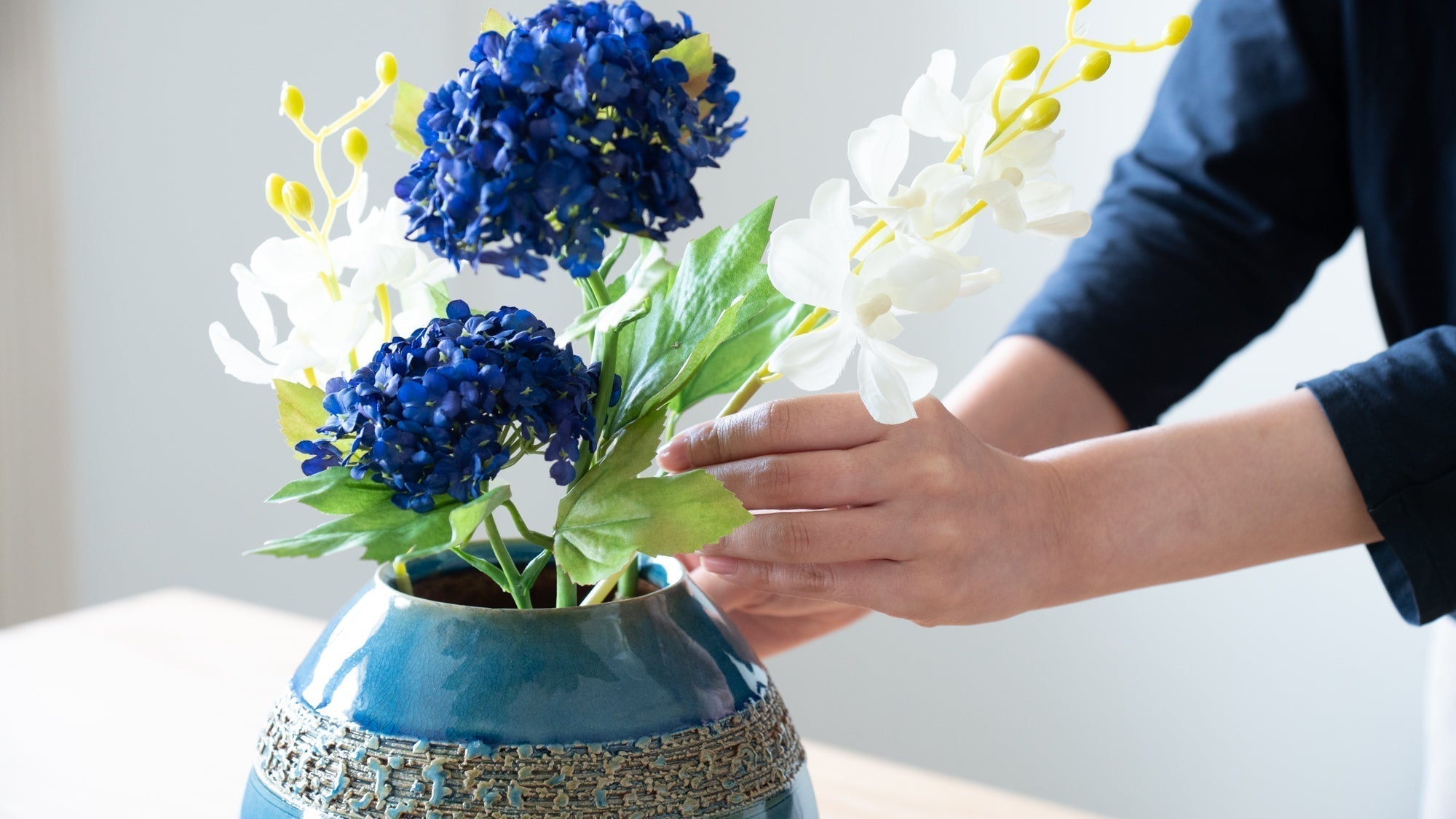
Style Your Home with a Japanese Flower Arrangement
Written by Team MUSUBI
Decorating your home with flowers is a great way to add a touch of color to a space and create a cheerful atmosphere. And by arranging seasonal flowers, you will be able to feel the beauty of the changing seasons closer to your home than ever before.
Also, by arranging flowers in a Japanese flower vase, you can bring the beauty of flowers with Japanese atmosphere into the space. Here are some tips on how to make your flower arrangements in a more Japanese style.
tables of contents
About Japanese Style Flower Arrangement

The most important thing in Kadō is to "arrange flowers as if they were blooming in the field". Unlike Western-style bouquets with many different types of flowers, arrangements are made to evoke nature itself.
For illustration, instead of a flowers blooming all over the field, flowers gently blooming on a quiet, empty riverbank are preferred. The arrangement is not a glamorous one, but one that tries to approach the natural beauty of the trimmed-down materials, which is in keeping with the Japanese aesthetic of “Wabi," which expresses the beauty found in poverty.
It is difficult to learn how to reproduce Japanese flower arranging in a full-fledged “Kadō" here because it is very time consuming to master, but we can tell you how to create simple Japanese-style arrangements.
"Like the sail of a yacht"
While working on the direction and balance of the flowers, branches, and leaves, try to arrange them in a triangular silhouette so that they do not crowd each other and interfere with the differences between them.
Imagine the flower vase as a sailboat, and the flowers and plants as the sails. Of course, there are exceptions to this rule, but think of the flowers and plants in the vase as a sail that matches the shape of the vase.
Shapes of Flower Vases And The Basic Arrangement
Vase with small mouth

Smaller mouth in vases allow for easier balancing of the flower arrangements.
Especially for those who are not used to decorating with flowers, a vase with a mouth of about 4 inches (10cm) or less (smaller than a fist) is recommended.
Recommend Item
Cylindrical vases or vases with large mouth

Cylindrical vases or vases with large mouths are a bit tricky when arranging small amounts of flowers, as the arranged flowers tend to disperse.
If you cut and arrange plants so that the height of the vase and the length of the visible part of the plant are 1:1, the arrangement will look well-balanced.
If you have a small amount of flowers or branches, try to arrange them in a way that they flow to one side. If you place them in the direction in which the most flowers are attached or look good, you can achieve a beautiful balance.
Recommend Item
Single-Flower Vases

For single-flower vases, put the flowers by cutting the stems short so that the balance of height between the flower and the vase is about 1:1 to 1:1.5.
When selecting flowers for single-flower vases, try to choose those that are unbranched and whose stems fit neatly into the vase. Flowers with thick, firm stems stand up straight, making it easier to display flowers well and stylishly.
Recommend Item
Be creative, imaginative, and enjoy interacting with flowers
The time to appreciate the beauty of fresh flowers is limited, but that is why it is important to create arrangements that make the most of their charm.
As you arrange flowers over and over again, you will find the best balance for your favorite vase. There are many ways to enjoy Japanese flower vases, whether you choose to use the flowers or the vase as the main element, so try using a Japanese vase in your own way.








Leave a comment
This site is protected by hCaptcha and the hCaptcha Privacy Policy and Terms of Service apply.